Disclosure: This article contains affiliate links. We may earn a commission from purchases at no extra cost to you, which helps our travel content.
Standing before the crystalline façade of Sweden's legendary Ice Hotel in Jukkasjärvi, I'm reminded that the most profound architectural experiences often emerge from embracing impermanence. As a landscape architect who has spent decades studying how environments influence our wellbeing, I find myself captivated by this structure that completely reimagines our relationship with winter's most abundant material. The Ice Hotel isn't merely a novelty accommodation; it represents a harmonious dialogue between Sámi cultural traditions, contemporary artistic expression, and the cyclical rhythms of nature. Each winter since 1989, this ephemeral masterpiece rises anew from the frozen Torne River, only to return to its source when spring arrives. During my recent weekend visit to document therapeutic spaces in extreme environments, I discovered that beyond its visual splendor lies a deeper narrative about sustainability, cultural preservation, and the healing power of connecting with elemental forces.
The Ancestral Connection: Ice as Cultural Heritage
The relationship between the people of northern Sweden and ice extends far beyond the modern Ice Hotel concept. For the indigenous Sámi people who have inhabited these Arctic regions for millennia, ice has always been both challenge and provider—a material to be respected and understood intimately.
During my conversations with local elders, I learned how traditional ice fishing techniques and winter navigation skills have been preserved across generations. These knowledge systems inform the sustainable harvesting practices now employed by the Ice Hotel's creators. Each winter, workers extract massive 2-ton blocks from the Torne River using specialized saws that follow traditional cutting patterns, creating a harvest that honors ancestral wisdom.
"We don't fight against nature here," explained Yngve, a Sámi guide who showed me how the hotel's location was chosen based on traditional knowledge of river flow patterns and optimal ice formation conditions. "The hotel exists because we listen to what the ice tells us."
This perspective resonated deeply with my own design philosophy. Throughout my career designing therapeutic landscapes, I've found that the most healing environments emerge when we align with natural processes rather than imposing rigid structures upon them. The Ice Hotel exemplifies this principle magnificently—its creators understand that they are not so much building a structure as they are temporarily borrowing material from the river, which will reclaim it come spring.
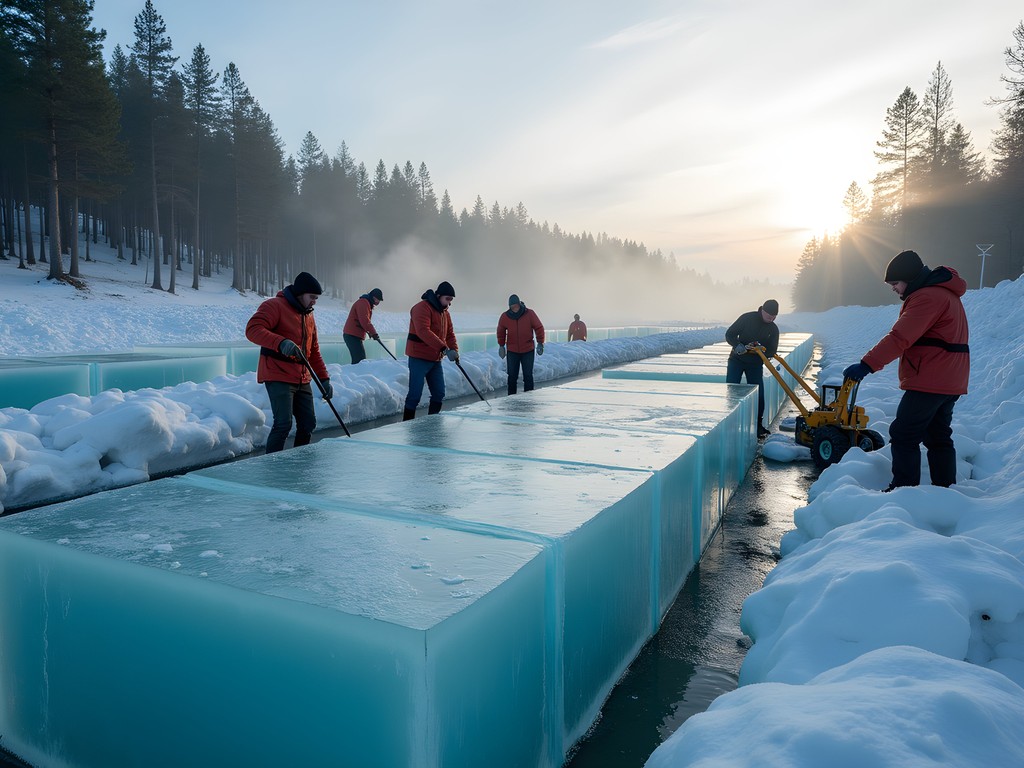
💡 Pro Tips
- Learn a few phrases in Sámi language to connect more deeply with local guides
- Ask about the traditional ice harvesting techniques that inform modern practices
- Visit the nearby Sámi cultural center to understand the broader cultural context
Ephemeral Architecture as Artistic Expression
What distinguishes the Ice Hotel from conventional architecture is its inherent temporality. Each November, a new iteration emerges through the collaborative efforts of international artists and local craftspeople, only to melt back into the Torne River by April. This cycle of creation and dissolution creates a unique artistic platform where permanence is never the goal.
During my visit, I was fortunate to speak with Luca Roncoroni, the hotel's creative director, who explained how this ephemerality liberates artists: "When you create something knowing it will disappear, you focus on the experience rather than the object. This changes everything about how you approach design."
Walking through the hotel's suites, each one a distinct artistic vision carved from ice and snow, I was struck by how the medium's transparency and luminosity create environments that feel simultaneously solid and ethereal. In one room, light filtered through ice walls embedded with Arctic botanicals; in another, geometric patterns carved into compacted snow created acoustic properties that subtly altered how sound traveled through the space.
I've documented healing gardens across five continents, but rarely have I encountered spaces with such transformative sensory qualities. The combination of temperature, light, sound, and touch creates what I can only describe as an 'environmental therapy' – something my wife and I sought during her recovery years ago. Many guests I spoke with described feeling a profound sense of presence and mindfulness during their stay, qualities I've spent my career trying to cultivate in therapeutic landscapes.
For photographers, capturing these ephemeral ice sculptures presents unique challenges. I found my camera hand warmer essential for keeping my equipment functioning in the sub-zero temperatures while documenting these spaces.
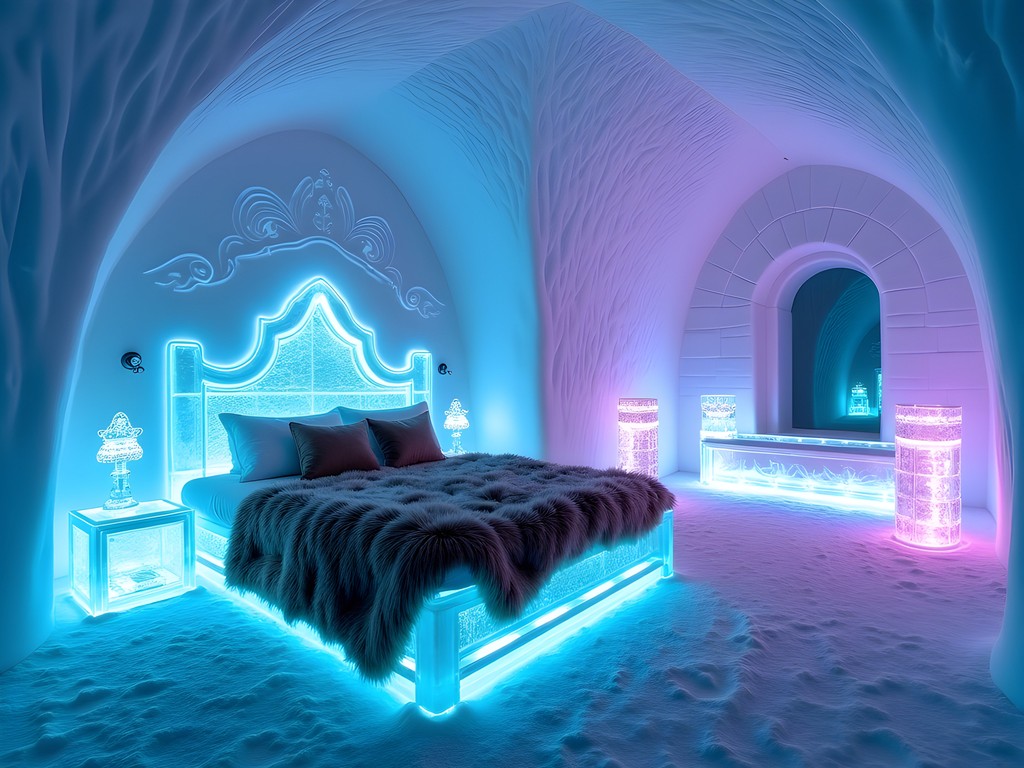
💡 Pro Tips
- Book an Art Suite for the full artistic experience rather than a standard ice room
- Visit both during daytime and evening to experience how light transforms the ice art
- Bring a tripod for long-exposure photography to capture the subtle luminosity of ice
Sustainable Practices: The Environmental Ethos
What impressed me most about the Ice Hotel wasn't just its artistic merit but its commitment to environmental stewardship. The structure embodies circular design principles in their purest form—built from local river water that returns to its source without waste.
In recent years, the organization has developed ICEHOTEL 365, a permanent structure that uses renewable solar energy to maintain ice art year-round. During summer months when the midnight sun shines 24 hours a day, solar panels harvest enough energy to keep the building cold throughout the warmer season.
"We're located 200km above the Arctic Circle, so we have abundant solar energy during summer months," explained Jens Thoms Ivarsson, the hotel's environmental director. "This creates a beautiful symmetry—winter's ice preserved by summer's sun."
As climate change increasingly threatens Arctic environments, the Ice Hotel has become an unexpected advocate for environmental awareness. By creating an experience that celebrates winter's beauty, they foster appreciation for what might be lost. The organization now participates in climate research, allowing scientists to study their ice archives for historical environmental data.
For my own comfort during frigid nights, I relied on my merino base layers which provided remarkable warmth without bulk—essential when you're sleeping on a bed of ice covered only with reindeer skins.
This balance of traditional knowledge and forward-thinking sustainability aligns perfectly with principles I teach at the Royal Botanical Gardens—that truly regenerative design must honor cultural heritage while embracing innovation.
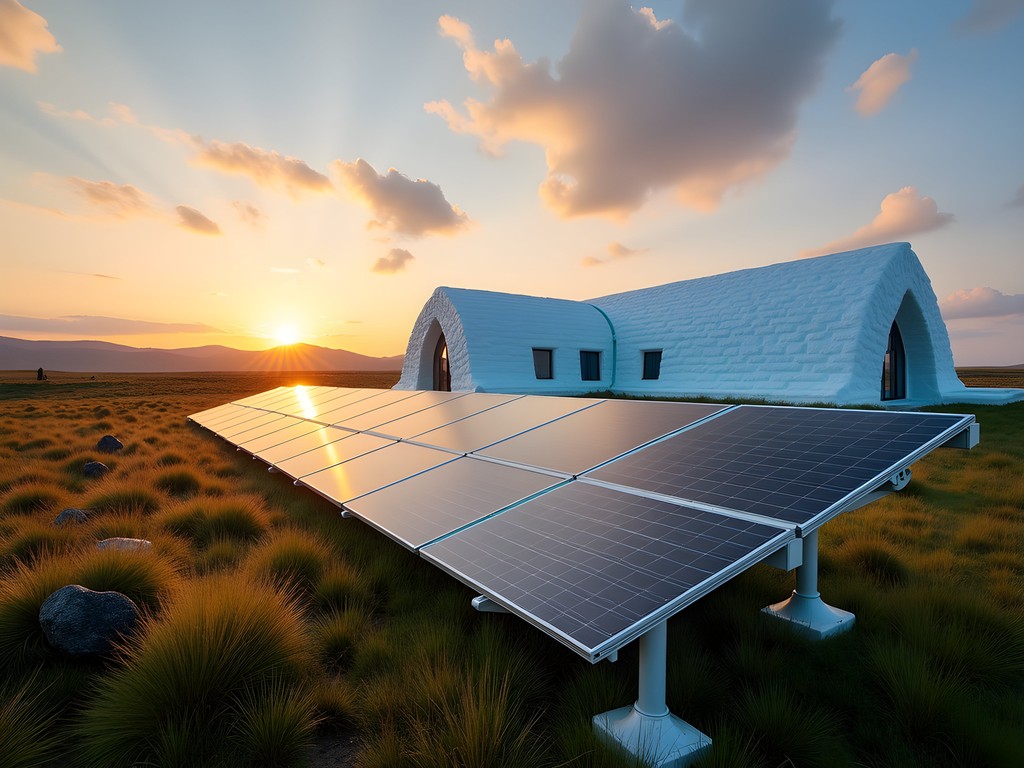
💡 Pro Tips
- Pack merino wool base layers instead of cotton for better temperature regulation
- Visit the hotel's sustainability center to learn about their solar energy systems
- Consider combining your stay with a northern lights viewing experience for minimal environmental impact
Therapeutic Elements: Cold as Healer
My professional interest in the Ice Hotel extends beyond its architectural significance to its potential therapeutic qualities. Cold exposure therapy has gained scientific recognition in recent years, but Nordic cultures have long understood the health benefits of alternating between extreme temperatures.
The hotel experience naturally incorporates this practice. Guests move between the -5°C (23°F) ice rooms and the warmth of saunas and hot tubs, creating a circulatory response that many find invigorating. This practice mirrors the traditional Nordic sauna ritual that ends with snow rolling or ice plunges.
"We don't explicitly market this as a health practice," noted Maria, the hotel's wellness coordinator, "but many guests report improved sleep, reduced inflammation, and a sense of rejuvenation after their stay."
I've documented similar therapeutic temperature contrasts in Japanese onsen traditions and Moroccan hammams, but the Ice Hotel offers perhaps the most dramatic version of this practice. The silence within the ice rooms creates an almost meditative environment—sound is absorbed by the snow walls, creating acoustic properties similar to those I've incorporated into healing gardens for cancer patients.
For those wanting to extend this therapeutic experience, I recommend bringing a insulated water bottle to maintain proper hydration with warm beverages throughout your stay. The dry Arctic air combined with temperature fluctuations can be dehydrating.
What fascinates me as a designer of therapeutic spaces is how the Ice Hotel inadvertently incorporates many elements we deliberately include in healing environments: sensory richness, connection to natural materials, temperature contrasts, and spaces that encourage mindfulness through their sheer beauty and uniqueness.
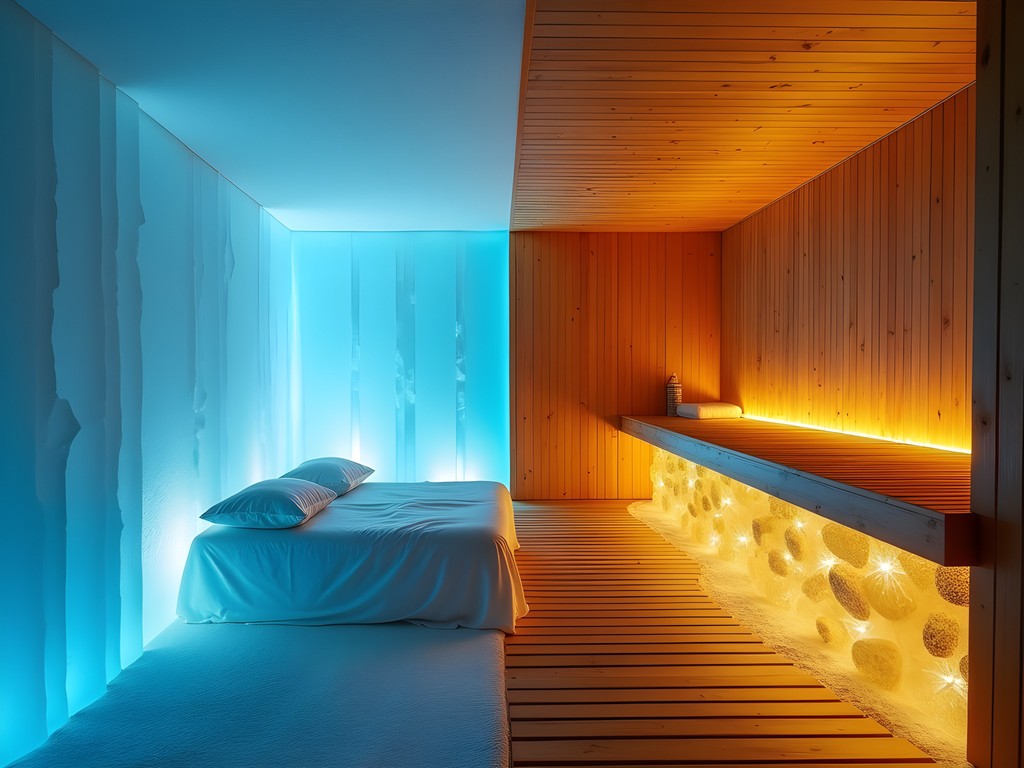
💡 Pro Tips
- Prepare for your stay with gradual cold exposure training in the weeks before
- Book a private sauna session to balance the cold experience
- Practice mindful breathing techniques to enhance your body's adaptation to the cold
Cultural Exchange Through Ice Artistry
Perhaps the most remarkable aspect of the Ice Hotel is how it has evolved into a global cultural exchange centered around ice as an artistic medium. Each year, artists from diverse backgrounds and disciplines submit designs, with selected participants traveling to Jukkasjärvi to realize their visions.
During my stay, I observed Japanese ice sculptors working alongside Swedish carvers, Brazilian light designers collaborating with Canadian architects. This creative confluence produces suites that reflect both universal themes and culturally specific aesthetics.
"Ice speaks a universal language," explained Åsa Andersson, who coordinates the artist selection process. "But each culture interprets it through their unique traditions and perspectives."
I was particularly moved by a suite designed by a Sámi artist who incorporated traditional joik singing into the experience—speakers embedded within ice walls played recordings that resonated through the crystalline structure, creating an immersive cultural experience.
This cultural exchange extends to guests as well. At the communal dining area, I shared meals with couples from Singapore experiencing snow for the first time, British honeymooners, and American photographers. Our shared experience of adapting to this unusual environment created immediate bonds across cultural differences.
For documenting these cultural interactions, I relied on my compact field notebook with waterproof pages, essential for taking notes in an environment where condensation and moisture are constant companions.
As someone who has documented healing spaces across cultures, I've observed that environments that challenge our comfort zones often create the most meaningful connections—both to place and to fellow travelers. The Ice Hotel exemplifies this principle, using the universal experience of cold and wonder to bridge cultural divides.
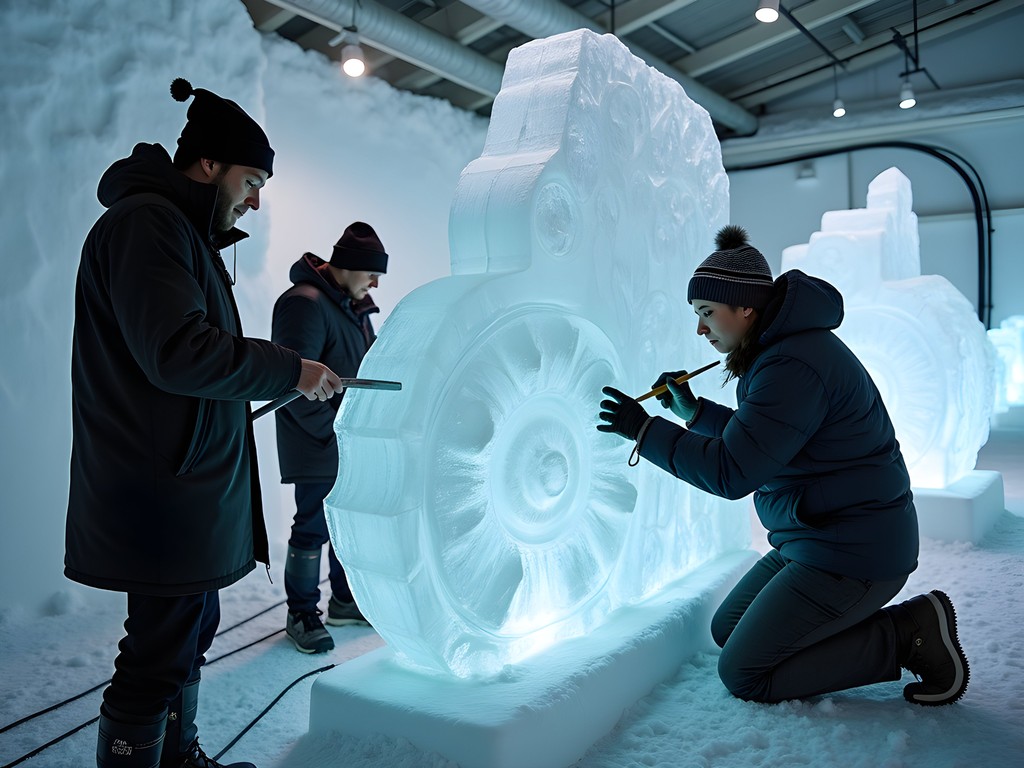
💡 Pro Tips
- Attend the artist presentations offered several evenings each week
- Learn about the specific cultural influences behind your suite's design
- Join communal meals to meet fellow guests from around the world
Final Thoughts
As my weekend at the Ice Hotel drew to a close, I found myself reflecting on how this remarkable structure embodies principles I've advocated throughout my career—that our most meaningful environments often arise from embracing rather than resisting natural processes. The Ice Hotel stands as a testament to what's possible when cultural wisdom, artistic vision, and environmental consciousness converge. For couples seeking more than mere accommodation, this ephemeral masterpiece offers a rare opportunity to experience art not as observers but as inhabitants, to participate in cultural traditions reimagined for our time, and perhaps most importantly, to rediscover wonder in winter's elemental beauty. As climate change threatens Arctic environments, experiences that foster appreciation for these fragile ecosystems become increasingly precious. I left Jukkasjärvi with renewed inspiration for my own work creating therapeutic landscapes—reminded that sometimes the most healing spaces are those that connect us to something larger than ourselves, even if only for a fleeting moment.
✨ Key Takeaways
- The Ice Hotel represents a perfect synthesis of traditional knowledge and contemporary artistic expression
- Environmental sustainability is integrated into every aspect of the experience, from construction to energy use
- The therapeutic benefits of cold exposure combined with artistic immersion create a unique wellness experience
- Cultural exchange between artists and guests creates meaningful connections across diverse backgrounds
📋 Practical Information
Best Time to Visit
December through March (peak season for northern lights and completed ice suites)
Budget Estimate
$350-800 per night, depending on room type and season
Recommended Duration
2-3 nights (one in ice room, remainder in warm accommodation)
Difficulty Level
Easy (Though Requires Comfort With Cold Temperatures)
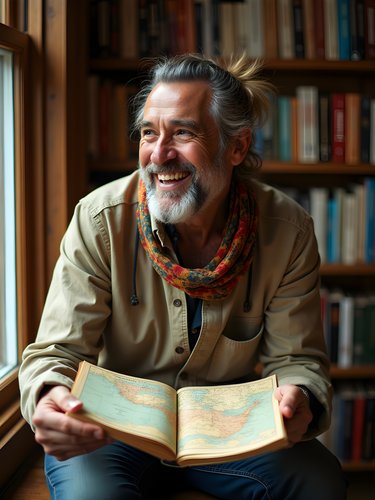
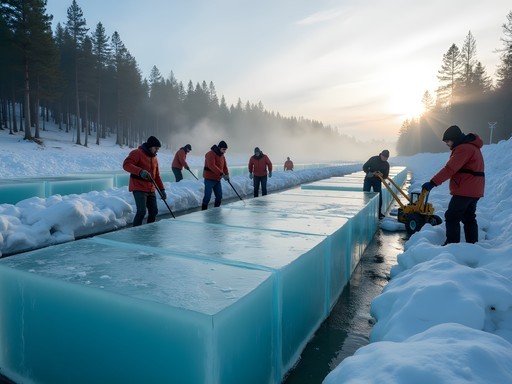
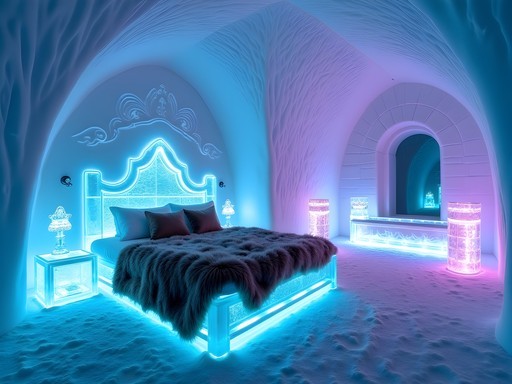
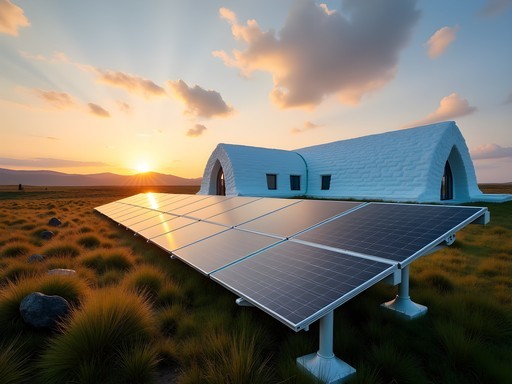

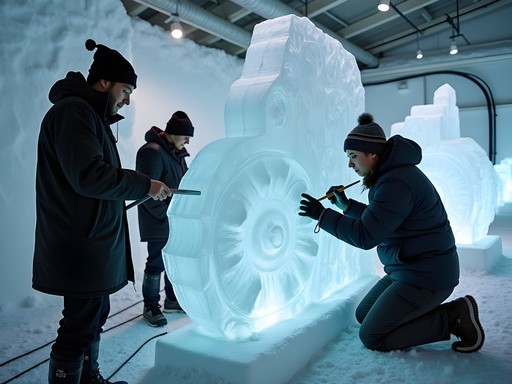


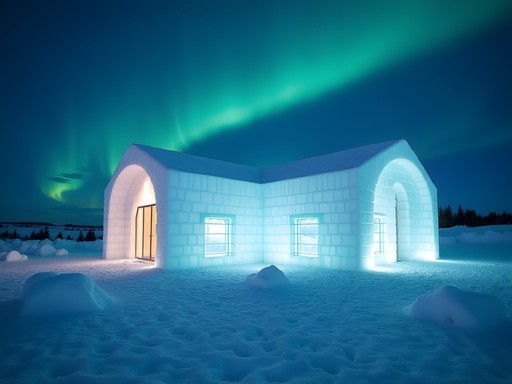

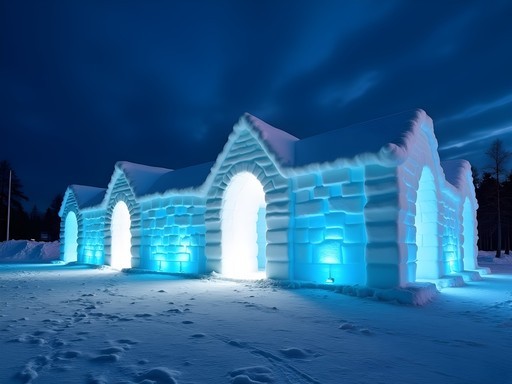





Comments
wandergal
That shot of the ice chandelier in the main hall is stunning! Your photography really captures the magical light quality inside.
Hunter Thompson
Brilliant post, Taylor! The connection between the Ice Hotel and Sámi traditions is something I wish more visitors understood before going. If anyone's planning a trip, try to time your visit with one of the local cultural festivals. I was lucky enough to be there during a traditional Sámi celebration and it added so much depth to the experience. Also, don't miss the chance to try reindeer stew at the restaurant - it's incredible after a day in the cold!
redexplorer
When would you say is the absolute best time to visit? I've heard January is good for northern lights but too cold?
Hunter Thompson
February to early March is the sweet spot in my opinion! Still dark enough for northern lights but temperatures are a bit more manageable. Plus the ice sculptures are in perfect condition!
Dylan Turner
Taylor's analysis of the ephemeral architecture concept really resonated with me. I visited the Ice Hotel in February and was struck by how the transience of the structure actually heightens the experience. Knowing it will melt away makes you appreciate every detail more intensely. The sustainable aspects deserve more attention too - they're now able to keep part of the hotel frozen year-round using solar power, which seems paradoxical but is actually brilliant engineering. If you're planning a visit, I recommend the Northern Lights snowmobile tour as a complementary experience. Make sure to bring proper base layers - I used my merino wool thermals and they were perfect for the -20°C temperatures.
luckyperson
Those ice sculptures are incredible! Bucket list material for sure.
freebuddy
This looks amazing but how much does a night at the Ice Hotel typically cost? Is it super expensive or somewhat reasonable?
Hunter Thompson
It's definitely a splurge! When I went in 2024, it was around 3000 SEK (~$285) for the most basic ice room, but the art suites that Taylor mentions can run 6000-7000 SEK per night. Most people just do one night in the ice room and then a few nights in their normal heated accommodations. Worth every penny though!
freebuddy
Thanks for the info! Might need to start saving up!
redexplorer
I stayed at the Ice Hotel last winter and it was one of the most surreal experiences of my life! The art installations in each room were mind-blowing - my room had these intricate forest spirits carved into the walls that seemed to glow from within. The cultural connection Taylor mentioned is spot on - our guide explained how ice harvesting from the Torne River has been part of local tradition for centuries. Sleeping on ice sounds crazy but with those reindeer hides and special sleeping bags, I was surprisingly comfortable. The silence inside those ice walls is something I'll never forget.
wandergal
Did you do the ice sculpting workshop? That was my favorite part!
redexplorer
Yes! I made a tiny ice fox that looked more like a blob with ears, but it was so fun trying. The instructors were super patient!
coffeelover7061
Is it worth the price? I've been looking at booking but it's not cheap!
wildone
I thought the same before going, but honestly? 100% worth it. It's not just a hotel room, it's an entire art experience that happens to be a hotel. Just budget for one night in the ice suite and maybe another in their warm rooms. The memories are priceless!
coffeelover7061
Thanks for the insight! That's a good idea about splitting the stay between ice and warm rooms.
George Hayes
Great article, Taylor! We took our kids (10 and 12) last December and they still talk about it constantly. For families considering this trip: the Ice Hotel actually has a perfect balance of "wow factor" and educational value. My advice is to book one night in the ice room and a couple nights in their warm accommodations. The kids were thrilled by the adventure of the ice night but everyone appreciated hot showers afterward! The sustainability aspect you mentioned is spot on - my children were fascinated by how they harvest ice from the Torne River and return it each spring. It sparked great conversations about responsible tourism.
roamlover
Those ice sculptures are next level! 🤯❄️
Olivia Sanchez
Taylor, your piece beautifully captures the spiritual dimension of the Ice Hotel that many travelers miss. When I visited in 2023, I was struck by how the Jukkasjärvi community has transformed what could be just a tourist gimmick into a profound cultural statement. I spent an evening with one of the ice artists who explained how they incorporate traditional Sámi symbols into the designs. The most powerful moment was sitting in the ice chapel at dawn - something about the blue light filtering through those walls made me understand why ice holds such sacred significance in northern cultures. I used my Arctic photography gloves which let me capture everything without my fingers freezing off!
Venture X
Premium card with 2X miles, $300 travel credit, Priority Pass